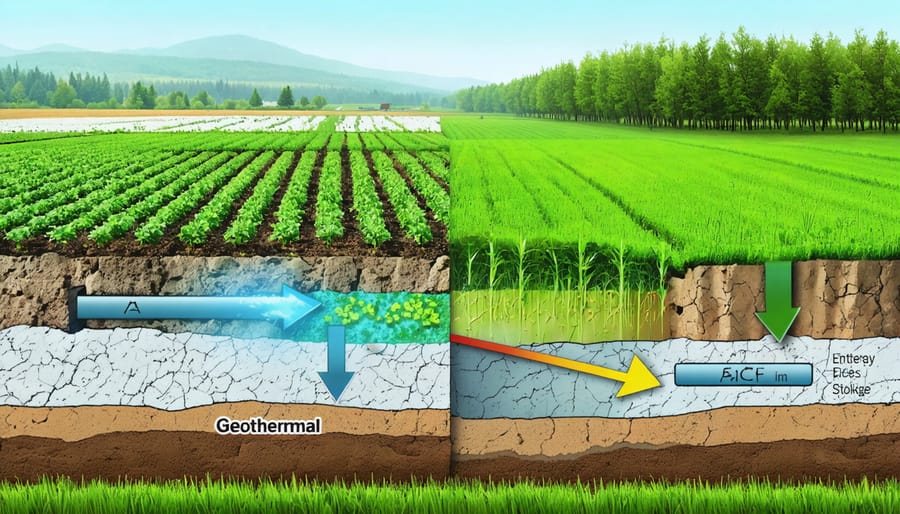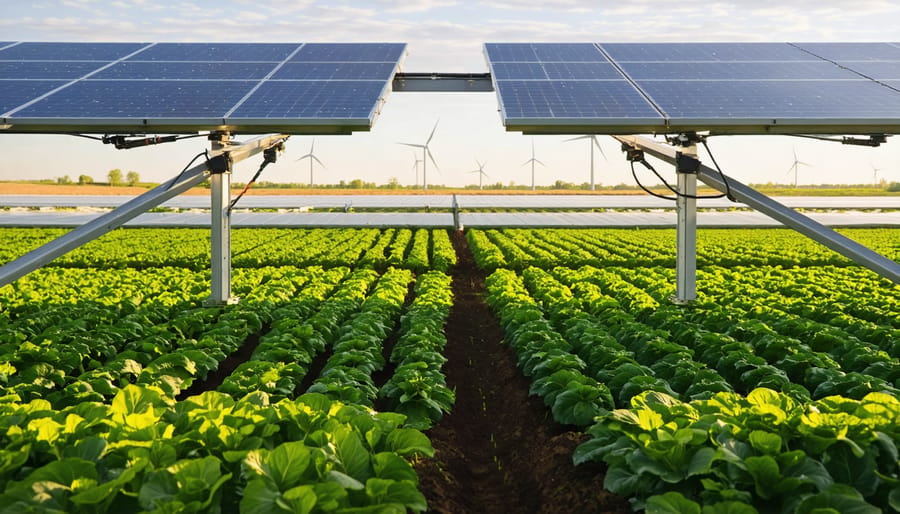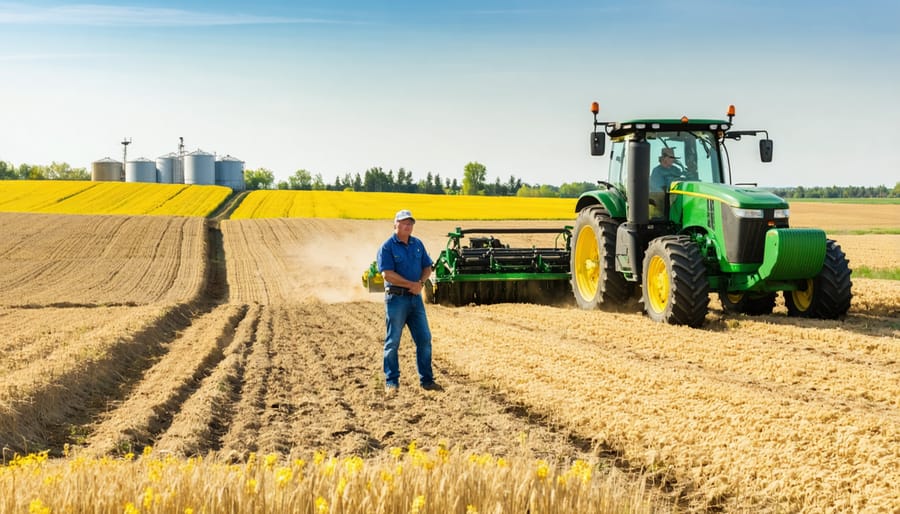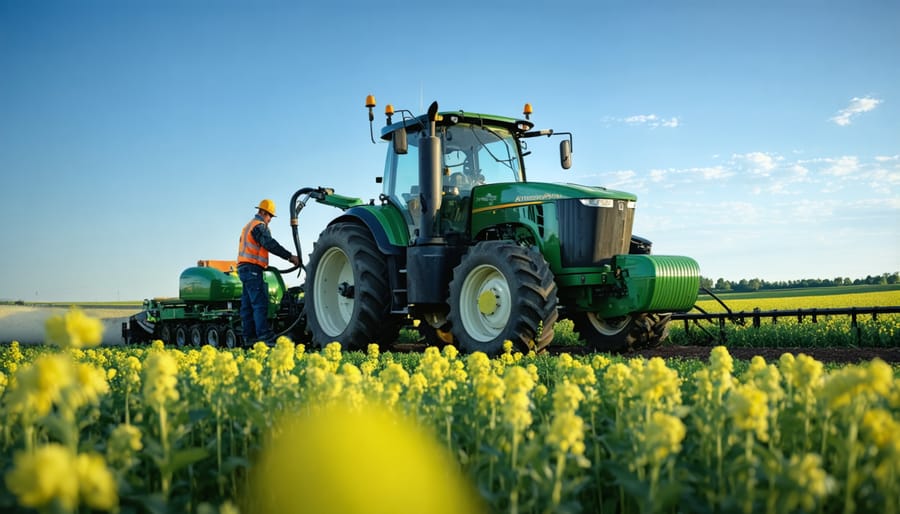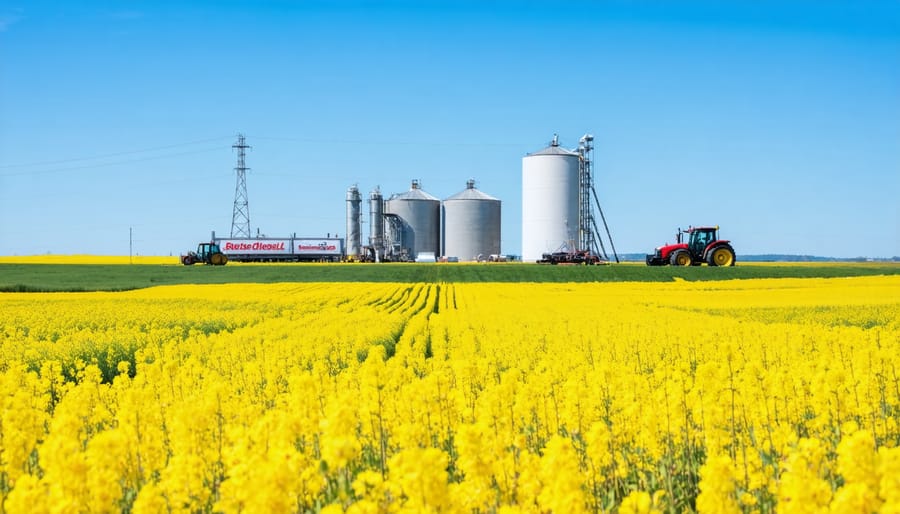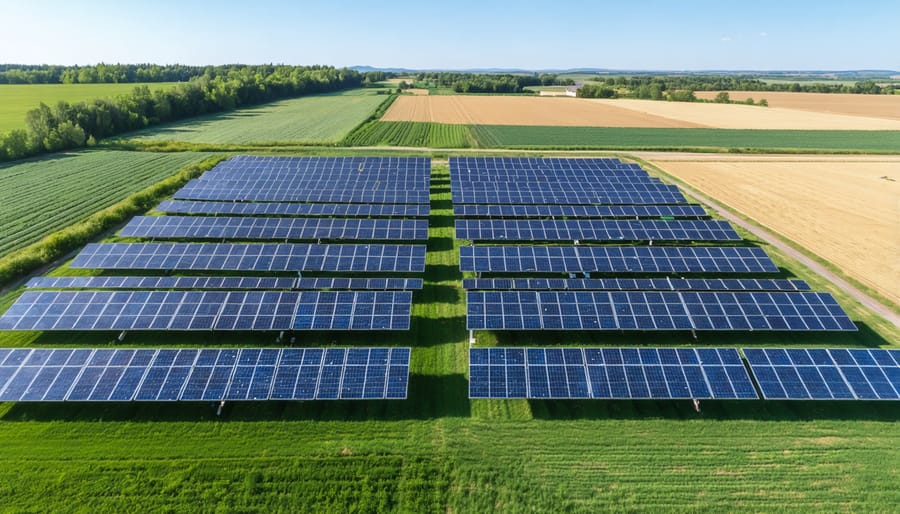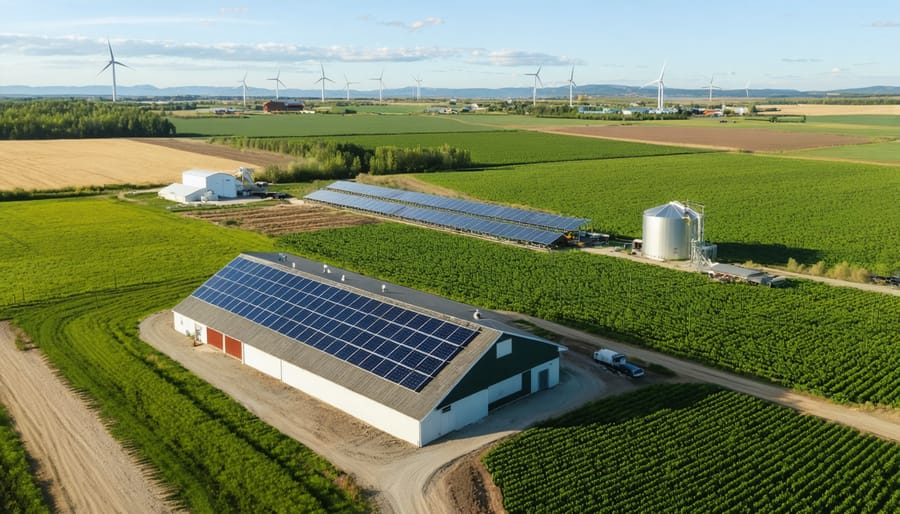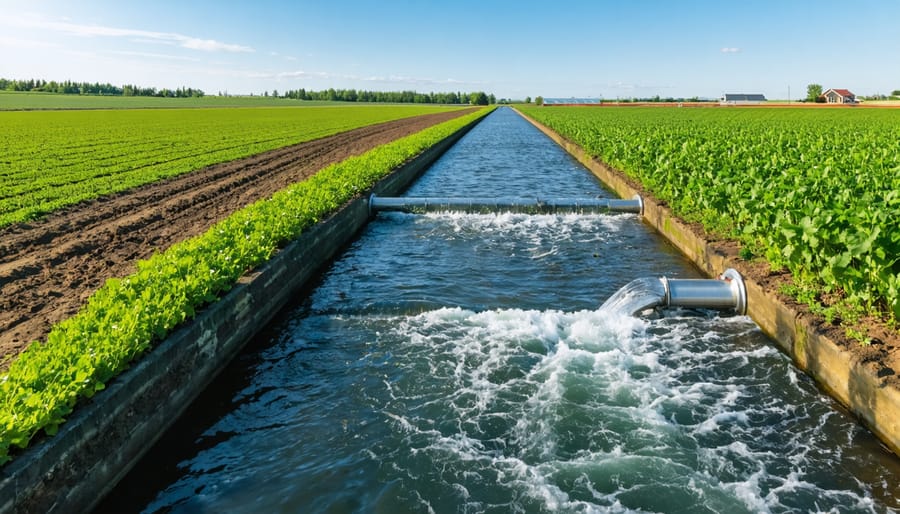Harnessing Earth’s thermal energy revolutionizes how Canadian farmers approach sustainable agriculture through advanced storage systems. Deep beneath Alberta’s fertile soil lies an untapped potential for year-round energy independence through geothermal storage technologies. As part of modern integrated energy solutions, geothermal energy storage systems capture and maintain heat in underground reservoirs, providing consistent temperature control for greenhouses and agricultural facilities throughout our harsh winters. These systems, already successfully implemented across several Prairie provinces, demonstrate up to 60% reduction in heating costs while maintaining stable growing conditions. By utilizing natural geological formations and engineered storage solutions, Canadian farmers can now access reliable, clean energy that addresses both environmental stewardship and economic sustainability demands in our agricultural sector.
Underground Thermal Energy Storage Systems for Agriculture
Aquifer Thermal Energy Storage
Aquifer Thermal Energy Storage (ATES) has become increasingly popular among Alberta farmers as a reliable method for storing and accessing geothermal energy. This system uses natural groundwater aquifers as thermal batteries, storing warm water during summer months and cool water during winter.
In a typical agricultural ATES setup, two wells are drilled into an aquifer – one for warm water storage and another for cool water. During summer, excess heat from greenhouse operations or solar collectors is transferred to the groundwater and stored in the warm well. In winter, this stored warm water can be pumped up to heat buildings or maintain optimal growing temperatures in greenhouses.
Many Alberta farmers have found success with ATES systems, particularly in regions with suitable aquifer conditions. For example, the Turner Valley Agricultural Complex uses an ATES system to maintain consistent temperatures in their year-round growing facilities, reducing heating costs by up to 60% compared to conventional systems.
The key advantage of ATES for Canadian farms is its reliability during harsh winters. The natural insulation provided by underground aquifers ensures minimal heat loss, making it an efficient long-term storage solution. Additionally, these systems require relatively low maintenance once properly installed, offering a sustainable approach to farm energy management.
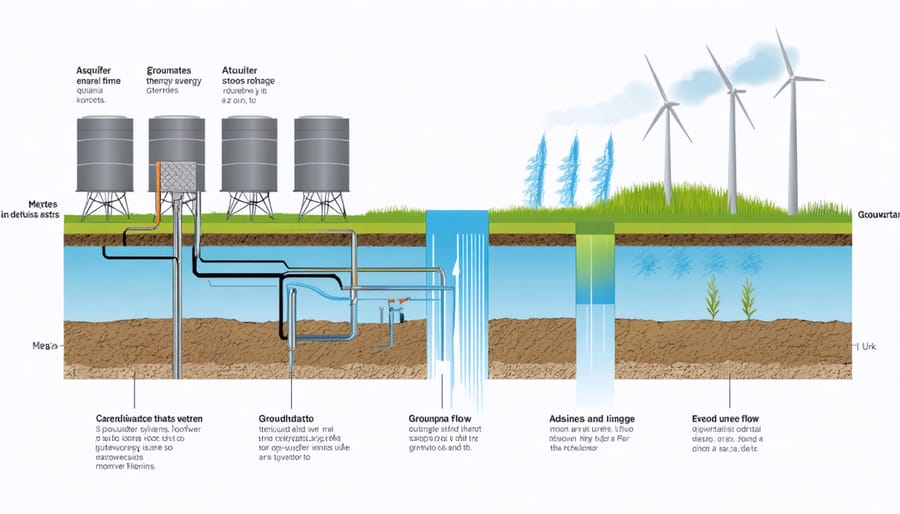
Borehole Storage Systems
Borehole storage systems are becoming increasingly popular among Alberta farmers, offering a reliable way to store geothermal energy throughout the year. These systems consist of vertical pipes drilled 50 to 200 metres into the ground, creating a network of heat exchangers that can efficiently capture and store thermal energy.
In agricultural settings, these boreholes work particularly well for greenhouse operations and livestock facilities. For example, the Thompson family farm near Red Deer installed a 20-borehole system in 2019, reducing their heating costs by 40% while maintaining consistent temperatures in their 2-hectare greenhouse operation year-round.
The installation process involves drilling multiple vertical shafts and inserting U-shaped pipes filled with a heat-transfer fluid, typically a water-glycol mixture that’s safe for agricultural environments. These pipes connect to a central heat pump system that distributes stored energy where needed.
What makes borehole storage especially practical for Canadian farms is its reliability during our harsh winters. The ground temperature remains stable at about 10°C below the frost line, providing a dependable heat source when you need it most and a cooling option during summer months.
Practical Applications in Alberta’s Agricultural Sector
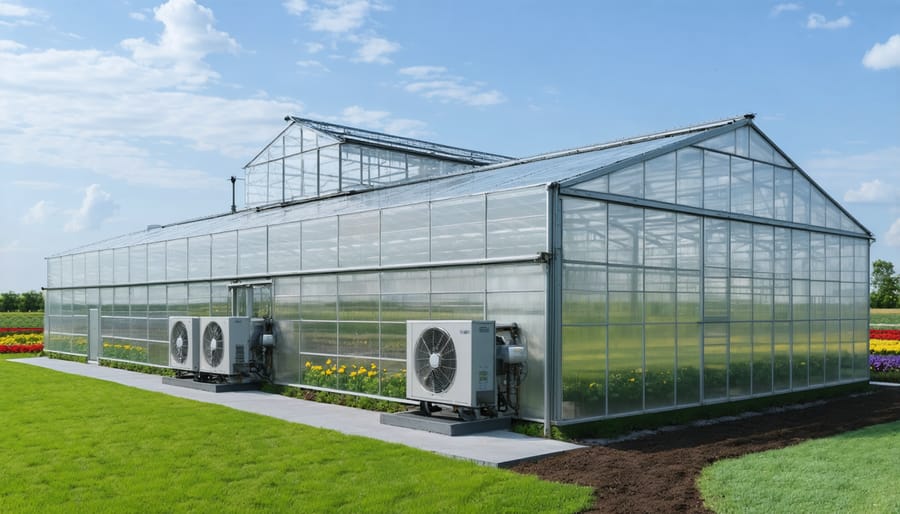
Greenhouse Operations
Geothermal energy storage has revolutionized greenhouse operations across Alberta, enabling farmers to maintain optimal growing conditions throughout our challenging Canadian winters. By integrating these systems with other sustainable farming practices, producers can extend their growing season while significantly reducing heating costs.
The stored heat maintains consistent soil temperatures between 18-22°C, creating ideal conditions for root development and plant growth. During winter months, when outside temperatures can plummet below -30°C, these systems release stored heat to maintain greenhouse temperatures, typically requiring 60-70% less energy compared to conventional heating methods.
At the Morrison Family Farm near Red Deer, their 2-hectare greenhouse operation uses a closed-loop geothermal system that stores excess summer heat in underground aquifers. This stored energy provides reliable heating throughout winter, allowing year-round production of tomatoes and cucumbers. The system paid for itself within five years through reduced energy costs and increased crop yields.
The stored geothermal energy also supports supplementary systems like soil warming cables and thermal curtains, creating a comprehensive climate control solution. Many Alberta greenhouse operators report producing up to three additional crop cycles annually, demonstrating the significant impact of geothermal storage on agricultural productivity and farm sustainability.
Livestock Facility Climate Control
In Alberta’s variable climate, maintaining consistent barn temperatures is crucial for livestock welfare and productivity. Stored geothermal energy offers a reliable solution for year-round climate control in livestock facilities. The system works by circulating the earth’s stable temperature through a closed-loop network beneath or adjacent to barn structures.
During winter months, when temperatures can plunge below -30°C, the stored heat from underground helps warm the facility while reducing traditional heating costs by up to 70%. In summer, the same system can cool barns by transferring excess heat back into the ground, creating a comfortable environment for animals even during heat waves.
Dave Thompson, a dairy farmer near Red Deer, implemented a geothermal storage system in 2019. “Our energy costs have dropped significantly, and our cows are noticeably more comfortable year-round,” he reports. “The consistent temperature has improved milk production by about 8%.”
The system is particularly effective for poultry barns, pig facilities, and dairy operations where temperature control directly impacts animal health and production. Initial installation costs are offset by reduced operational expenses and potential government incentives for sustainable farming practices. Many Alberta farmers report breaking even on their investment within 5-7 years, while enjoying the benefits of more stable indoor temperatures and reduced carbon emissions.
Implementation and Cost Considerations
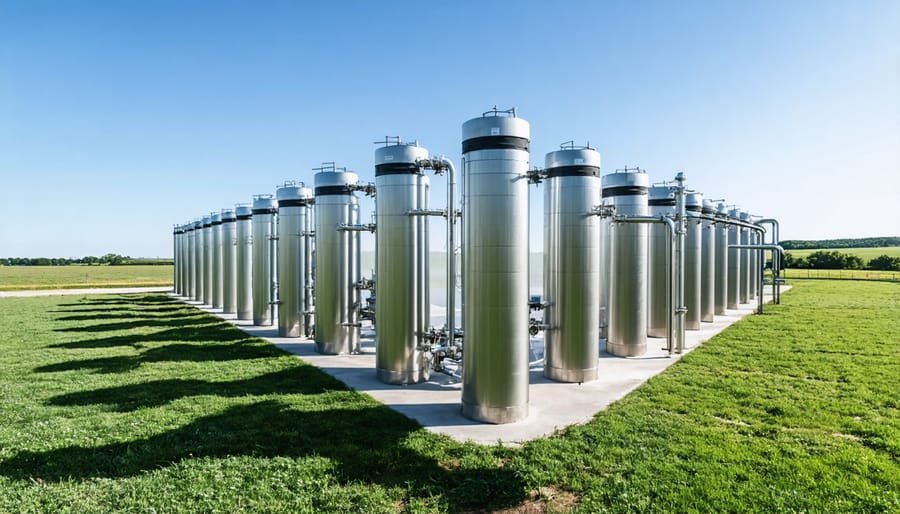
Initial Setup Requirements
For a successful geothermal energy storage system on your farm, you’ll need several key components working together. The heart of the system is the ground loop – a network of high-density polyethylene pipes buried at depths of 1.5 to 200 metres, depending on your specific needs and land characteristics. These pipes typically contain a mixture of water and environmentally-friendly antifreeze.
The system also requires a heat pump unit, which helps transfer and regulate the stored energy. For most Alberta farms, a 3-to-5-ton heat pump is suitable for moderate-sized operations. You’ll need a distribution system, including properly insulated ducts or pipes, and a control system to manage temperature regulation.
Before installation, a thorough site assessment is essential. This includes soil testing to determine thermal conductivity and a geological survey to identify the best location for the ground loops. Local Alberta contractors recommend conducting these assessments during spring or early summer when ground conditions are optimal.
The installation process typically takes 1-2 weeks, involving excavation, pipe laying, and system connection. It’s important to work with certified geothermal installers who understand Alberta’s unique soil conditions and climate challenges. Many successful installations in our region have shown that proper initial setup leads to decades of reliable operation.
Financial Planning and ROI
Investing in geothermal energy storage requires careful financial planning, but Canadian farmers can benefit from several cost-saving incentives. The initial installation costs typically range from $20,000 to $40,000 for a medium-sized agricultural operation, though prices vary based on system size and site conditions. However, renewable energy investments like geothermal systems often pay for themselves within 5-7 years through reduced energy costs.
Alberta farmers can access funding through the Canadian Agricultural Partnership (CAP) program, which offers up to 30% cost-sharing for energy efficiency improvements. Additional support is available through the Farm Energy and Agri-Processing Program (FEAP), providing grants up to $250,000 for sustainable energy projects.
Annual energy savings typically range from $3,000 to $6,000 for greenhouse operations, with additional benefits in reduced maintenance costs compared to conventional heating systems. Many farmers report ROI improvements through extended growing seasons and decreased crop loss during extreme weather events.
Local agricultural cooperatives often provide group purchasing options, helping reduce installation costs through bulk ordering. Consider consulting with an agricultural financial advisor to create a customized payment plan that aligns with your farm’s cash flow and take advantage of available tax incentives.
As we’ve explored throughout this article, geothermal energy storage offers Alberta farmers a reliable, sustainable solution for managing energy needs year-round. By harnessing the earth’s constant temperature, these systems can significantly reduce heating and greenhouse operation costs while shrinking our carbon footprint.
The benefits extend beyond just cost savings. From maintaining optimal temperatures in livestock buildings to extending growing seasons in greenhouses, geothermal storage systems are proving their worth across our agricultural community. Many of our neighbours, like the Morrison Family Farm in Red Deer County, have already seen their energy bills drop by 40-60% after installation.
For those considering this investment, remember that various provincial and federal grants are available to help offset initial costs. Our local agricultural extension offices and renewable energy associations stand ready to provide guidance and support through the implementation process.
As our farming practices evolve to meet future challenges, geothermal energy storage represents a practical, proven solution that aligns with both our agricultural needs and environmental responsibilities. Together, we can build a more sustainable future for Alberta’s farming community.

